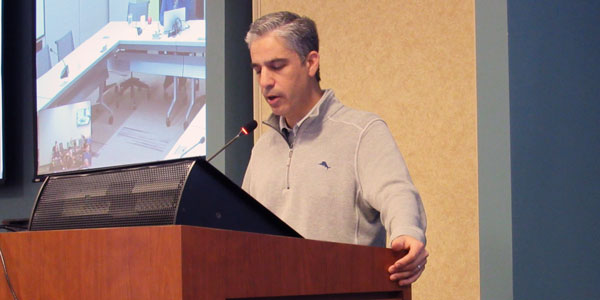By Amanda Durish Cook
CARMEL, Ind. — MISO will spend $1.8 million on consultants to evaluate how its aging market system can be improved to respond to stress and future threats.
Jeff Bladen, executive director of market services, said it was hard to put a date on when MISO’s market system will hit its limits, but if it isn’t overhauled, it could fail in five to seven years.
Bladen told the Market Subcommittee on Nov. 29 that some of the code in the RTO’s late 1990s software platform dates back to the late 1980s. “It’s a very dated software architecture for what it’s used for today,” Bladen said. “You can install airbags into a 1950s Chevy; it doesn’t mean the car is safe. … Frankly, we’re not the only RTO having these challenges.”
Bladen said MISO and consultants will be studying the effects of changes such as increased intermittent and behind-the-meter generation and increased combined cycle units.
“I do want to stress that we see no risk to reliability in the near term,” he said.
The $1.8 million in funding will be used to cover a series of independent and third-party studies from November to April, with the first 30-day study examining if MISO’s planned efforts are enough. MISO plans to spend $1.1 billion on information technology between 2015 and 2019.
Bladen said the aim of the studies is to provide the Technology Committee of the Board of Directors with “a complete and comprehensive view of the limitations and viability of current market systems.” He said MISO will make reports on its findings to the committee during the first three board meetings in 2017. Bladen said he did not expect an immediate “huge” investment to be revealed at the meetings.
Market Improvements Continue in 2017
MISO’s Mia Adams reported that three Market Roadmap projects were completed in 2016 and six projects are planned for 2017.
In 2016, MISO expanded its day-ahead market coordination with PJM with a firm flow entitlement exchange process and introduced pricing floors to its emergency pricing structure.
It also rolled out a product allowing generators to voluntarily set aside ramping capability for fleet flexibility during peak hours compensated by MISO at no more than $5/MWh. Chuck Hansen, of MISO’s market evaluation design group, said the ramp product has been delivering “tangible benefits” since its May launch, with projected annual savings of $4.2 million in resource production costs and reserve shortage price spikes.
For 2017, MISO plans to:
- Make improvements to its day-ahead reliability assessment commitment software.
- Control power swings caused by market-to-market dispatch.
- Improve MISO-PJM interchange modeling and pricing.
- Tighten thresholds for uninstructed deviation. Jason Howard, MISO market quality manager, said strengthened thresholds for uninstructed deviation are still under review for their impacts. Proposed changes, draft Tariff language and analysis results will be readied in early 2017. (See Monitor Again Criticizes MISO’s Uninstructed Deviation Rules.)
- Introduce the second phase of its extended locational marginal pricing, which will expand price-setting eligibility to online resources with a one-hour start-up time. MISO’s Congcong Wang said the expansion had stakeholder support because it was a change the RTO could adopt without new software and captured about 60% of peaking resources. A FERC filing is planned in the first quarter with testing to begin in the second quarter. (See “MISO to Expand ELMP Price Setting, but not to IMM’s Specs,”MISO Market Subcommittee Briefs.)
- Launch MISO-PJM coordinated transaction scheduling. MISO’s Beibei Li said the product should come online in October 2017, after vendor General Electric delivers the software sometime in December and the RTOs spend time testing it. (See “MISO-PJM Coordinated Transaction Scheduling Delayed,”MISO Market Subcommittee Briefs.)
Additionally, MISO research and development adviser Yaming Ma said the RTO will publish a study by July on automatic generation control to better use fast-ramping resources. The project was identified as high priority in 2015’s Market Roadmap classification, and a two-stage study began in September. Ma said design details would likely emerge in late 2017, but first MISO will use a prototype to develop strategies for storage resources that may have limited amounts of power on hand.
DTE Energy market developer Nick Griffin asked how fast resources must be to be included in automatic generation control. Bladen said while MISO would use battery storage as “proxy speed, MISO will test a small gamut of different response speeds.”





